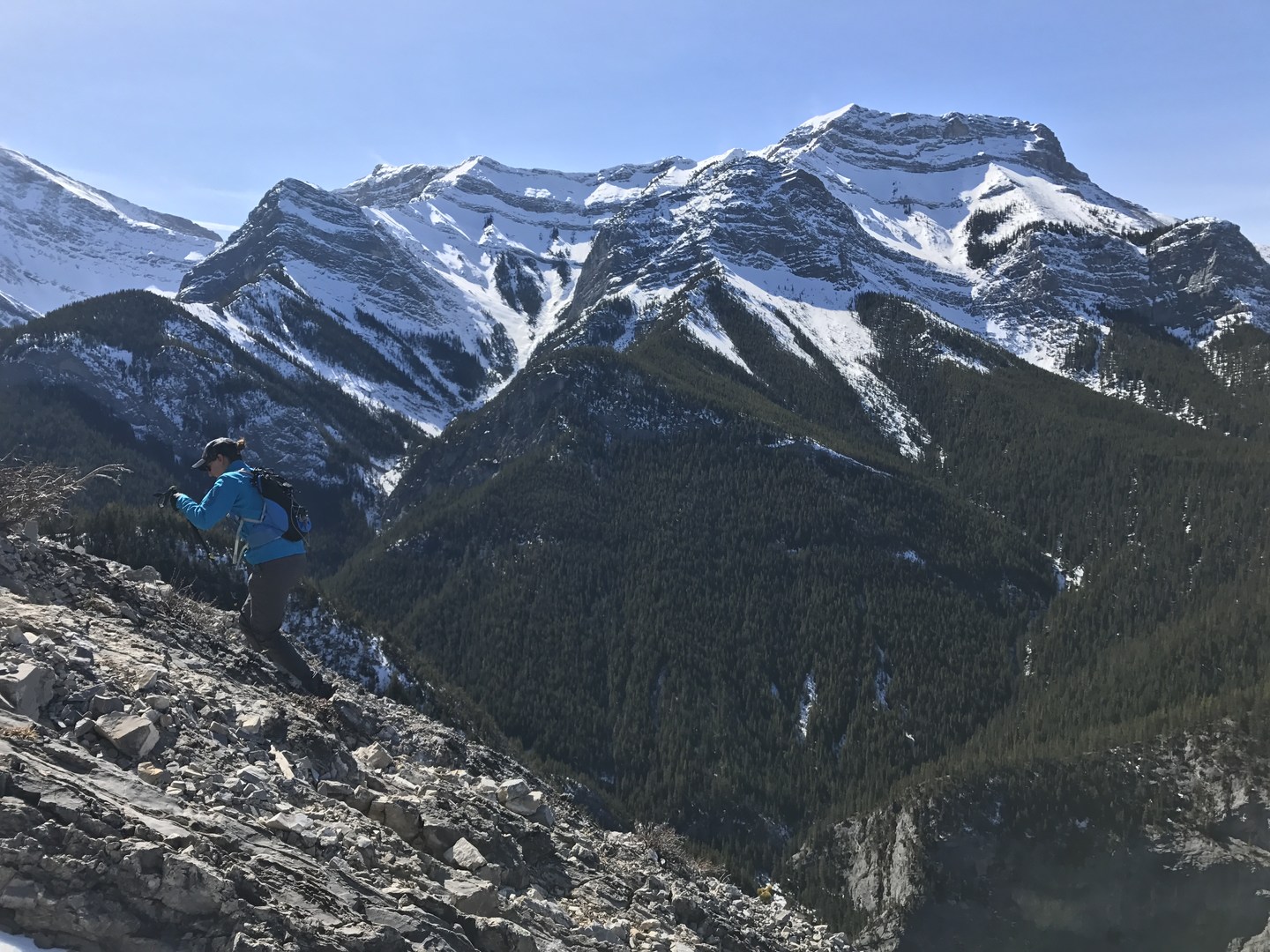You are here
Heart Mountain is a popular hiking and scrambling route a short drive from Calgary and Canmore. Officially, it's considered a scramble as there is a section of Class III scrambling on the route that requires a bit of route finding. There is no overhead hazard, and a helmet isn't necessary, so it's not quite a mountaineering objective. For those afraid of heights, this will be scary, but with good coaching and an experienced partner, it is doable. The good news is that you get passed the scary stuff rather quickly. The trail is a popular alpine run for Canmore's rather ambitious trail community and is one of the better routes in the area.
The route begins in a parking lot across from Lac Des Arcs, following a fairly flat trail past to a wide open field. This provides a good view of the peak itself, and you may be able to make out the traverse route.
Cross the washed-out creekbed and join the trail on the other side. From here it picks up quickly, getting steeper and steeper. As you ascend, the route becomes rockier and rockier. Keep on the lookout for the easiest path. Often you can see scratch marks from crampons and microspikes that generally follow the best route. Eventually, the route becomes entirely rock at a short but steep wall of about 1.2 to 2 meters that interrupts the trail. If you stand at the wall and look slightly downhill, you should be able to find several polished steps that will allow you to move through this section. It might take time to locate these in the mass of gray, but they are there and secure. Rock slabs beyond this point lead to the first summit. The trail becomes less obvious, but the scratch marks and cairns are helpful. Just above this is the summit cairn of Heart Mountain. If you don't fancy going farther and just want to summit one peak, then you can descend back whence you came.
If you plan on doing the traverse you can take comfort that the worst is behind. Follow the ridge line from here keeping to the fairly well defined trail that keeps to the peak of the ridge. In early season, there is often snow still in sections, so gaiters are recommended. The ridge meanders, occasionally narrowing, but never for very long. You get incredible 360-degree views as you wander through this incredible mountainscape. Be sure to conserve your energy for the many ups and downs along the traverse.
The route follows a long path over three summits, the tallest being Grant McEwan. There is a faint trail to the Twin Towers heading directly south from here for those looking for extra challenges.
Drop down a bit again and then walk along the ridge. The final summit goes by quickly, and it's back into rocky terrain with ample scree as you descend on an increasingly steep trail. The trail softens underfoot, but remains steep as you weave through tight switchbacks.
The trail ends at a T-junction. Follow the signs westward to Lac Des Arcs and the parking lot. It's fairly flat here and, if you're running, an excellent spot to make up for lost time. Reconnect with the original trail at the base, then it's a short jaunt to the parking lot.








Comments
Sign In and share them.